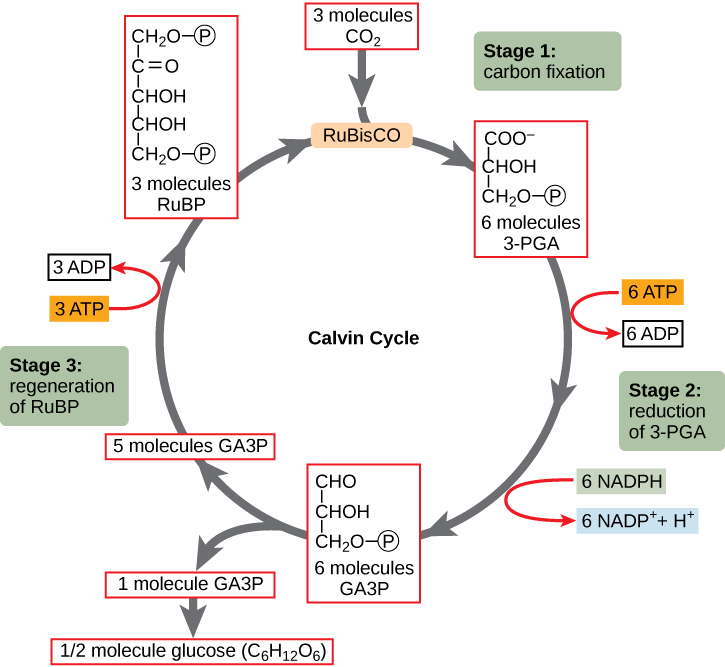| << Chapter < Page | Chapter >> Page > |
After the energy from the sun is converted into chemical energy and temporarily stored in ATP and NADPH molecules, the cell has the fuel needed to build carbohydrate molecules for long-term energy storage. The products of the light-dependent reactions, ATP and NADPH, have lifespans in the range of millionths of seconds, whereas the products of the light-independent reactions (carbohydrates and other forms of reduced carbon) can survive for hundreds of millions of years. The carbohydrate molecules made will have a backbone of carbon atoms. Where does the carbon come from? It comes from carbon dioxide, the gas that is a waste product of respiration in microbes, fungi, plants, and animals.
In plants, carbon dioxide (CO 2 ) enters the leaves through stomata, where it diffuses over short distances through intercellular spaces until it reaches the mesophyll cells. Once in the mesophyll cells, CO 2 diffuses into the stroma of the chloroplast—the site of light-independent reactions of photosynthesis ( [link] ). These reactions actually have several names associated with them. Another term, the Calvin cycle , is named for the man who discovered it, and because these reactions function as a cycle. Others call it the Calvin-Benson cycle to include the name of another scientist involved in its discovery.

The light-independent reactions of the Calvin cycle can be organized into three basic stages: fixation, reduction, and regeneration.
In the stroma, in addition to CO 2 , two other components are present to initiate the light-independent reactions: an enzyme called ribulose bisphosphate carboxylase (RuBisCO), and three molecules of ribulose bisphosphate (RuBP), as shown in [link] . RuBP has five atoms of carbon, flanked by two phosphates.

Which of the following statements is true?

Notification Switch
Would you like to follow the 'General biology part i - mixed majors' conversation and receive update notifications?